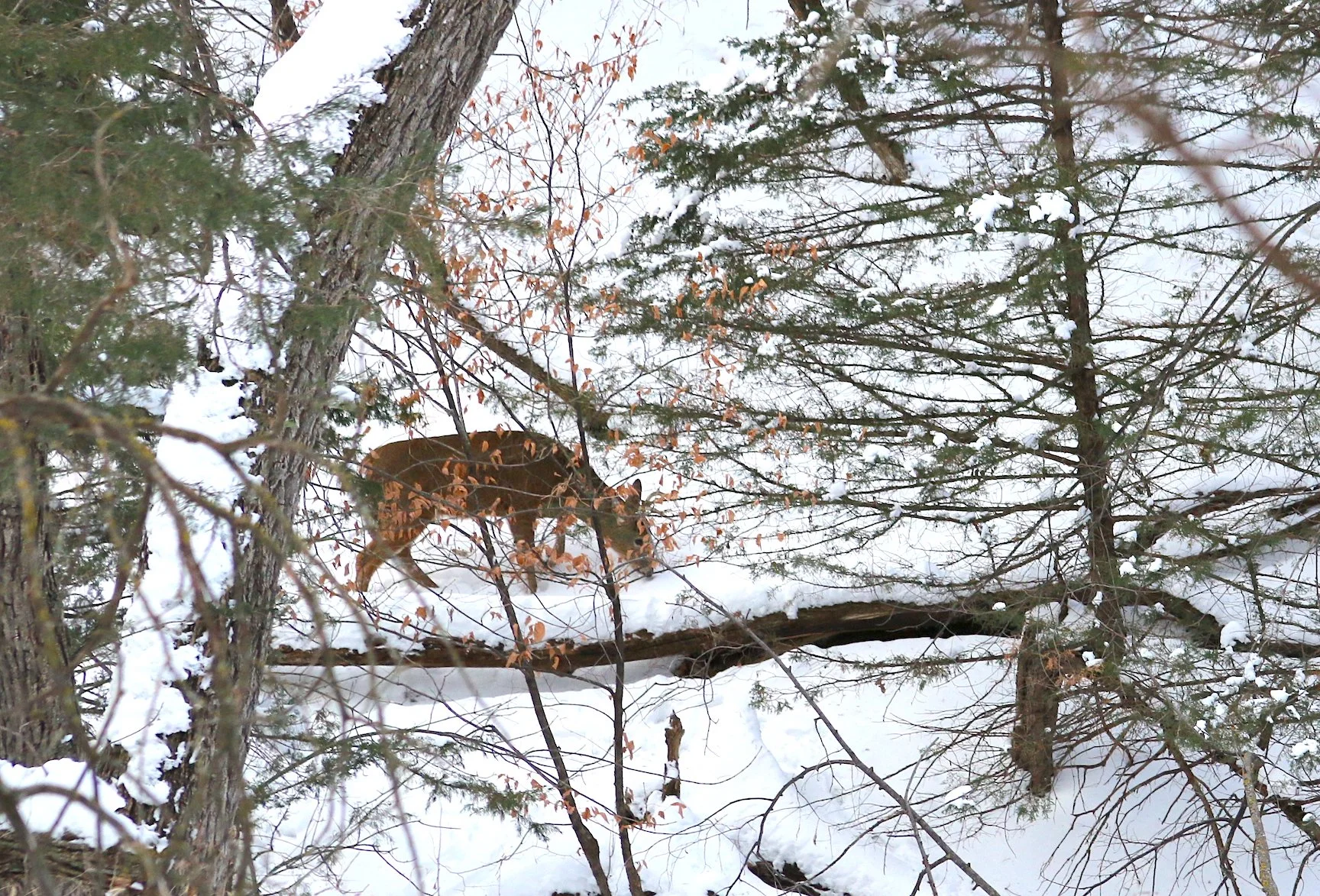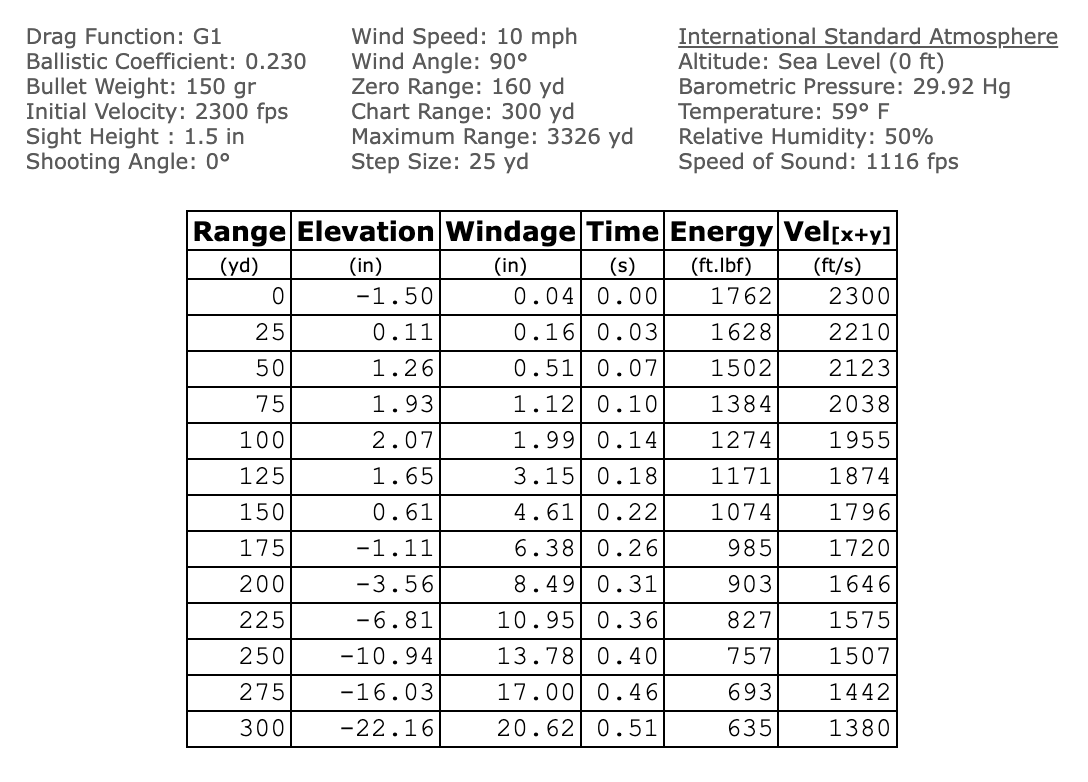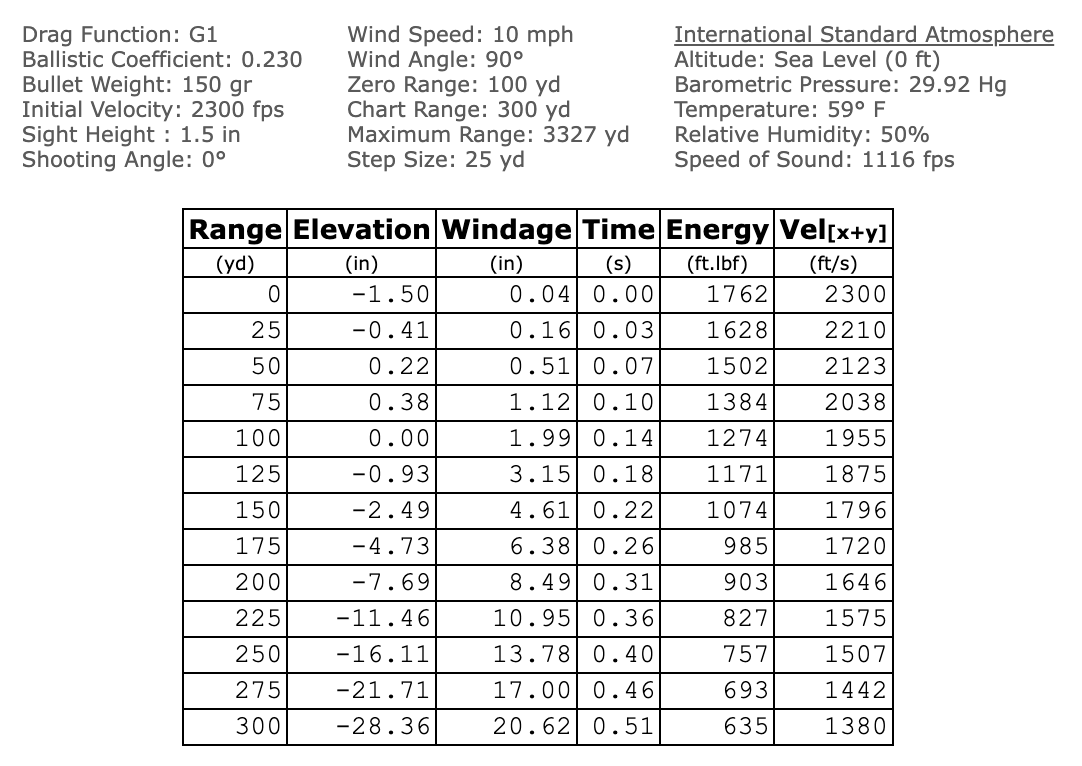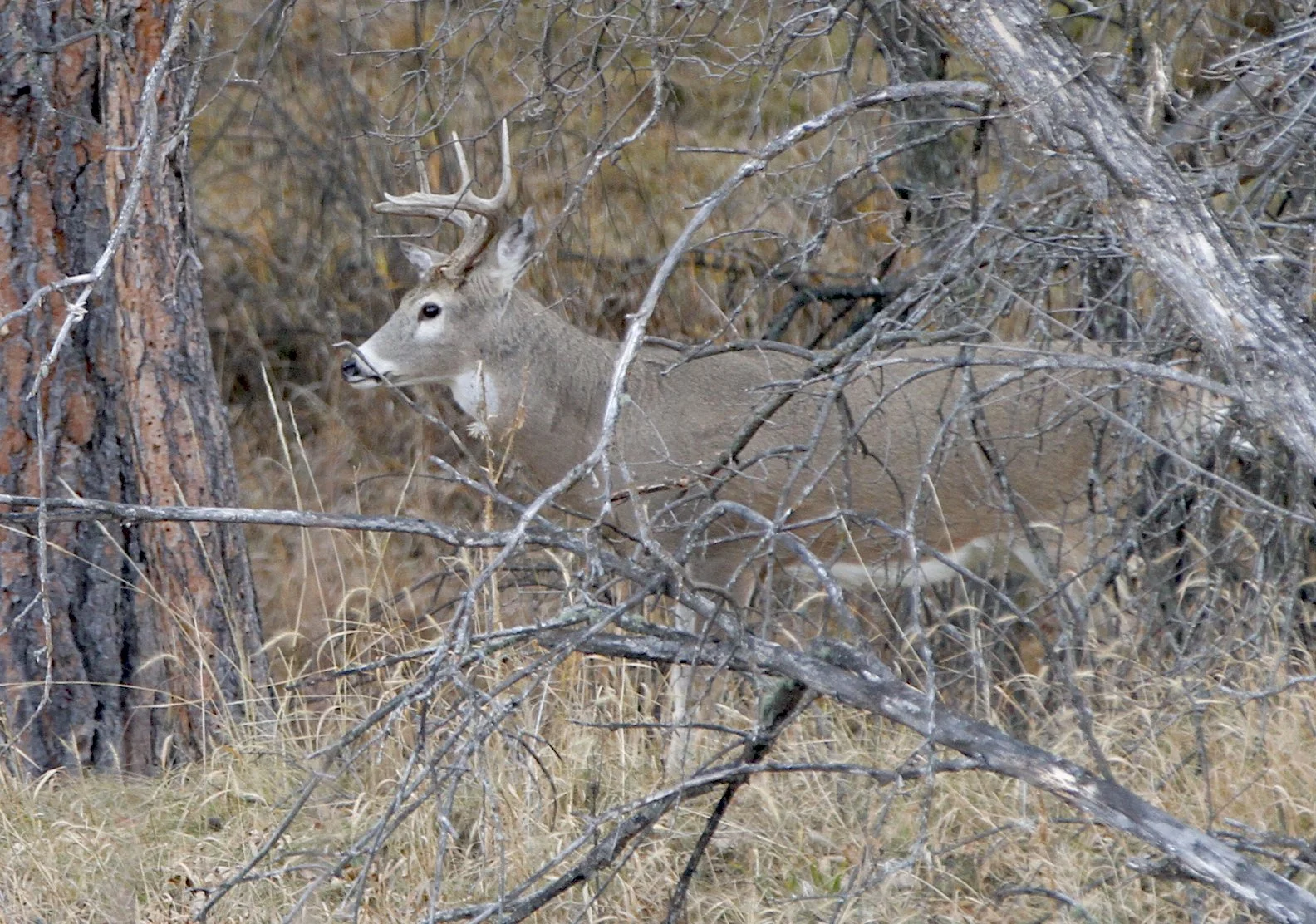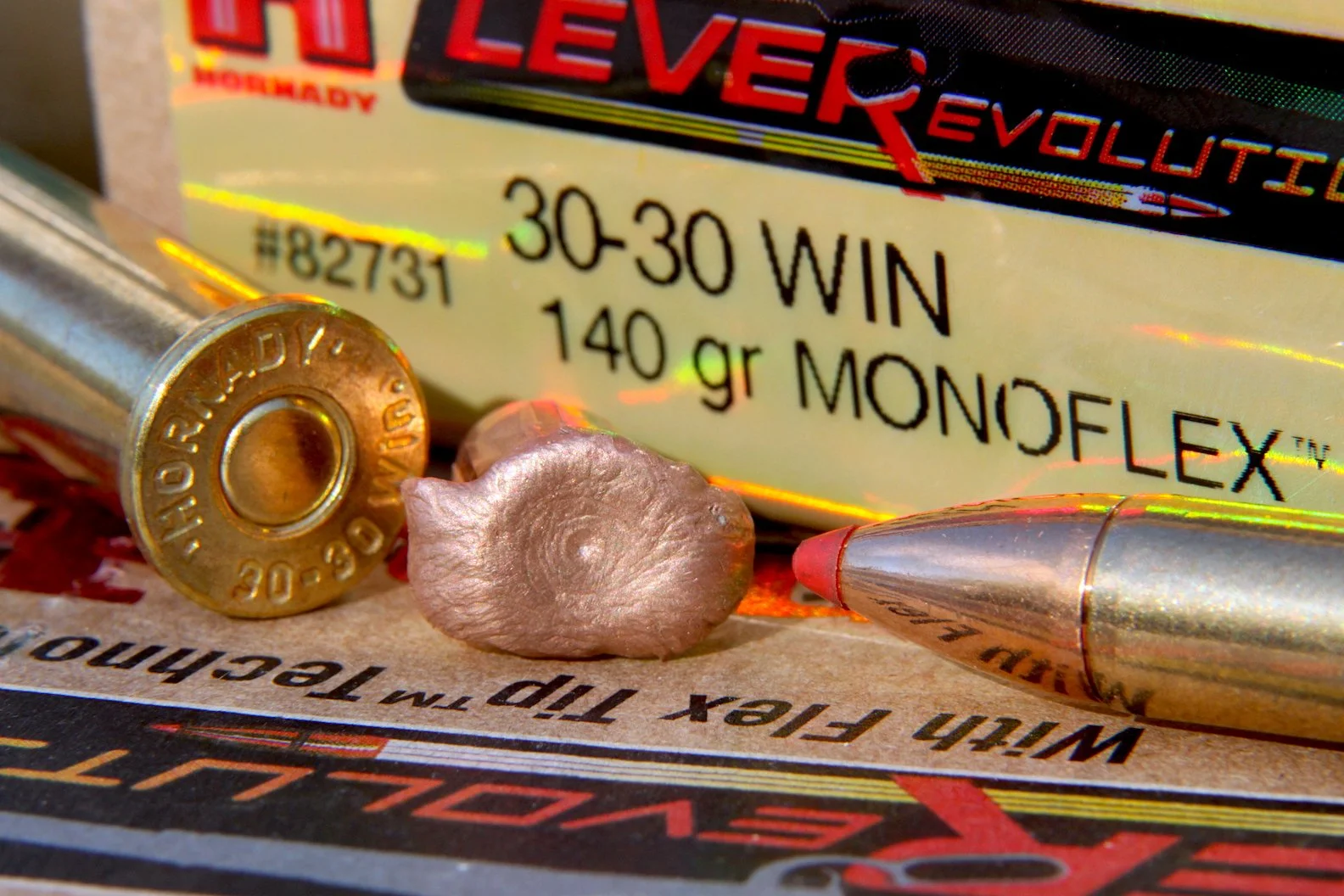Best 30-30 Zero Range for Deer Hunting
The best distance at which to zero your 30-30 for deer hunting is 160-yards. Unless…
Before we dive into the “unless” part of this, let’s define what we’re trying to do. We want to zero our 30-30 deer rifle so that we can aim center chest and hit the vital zone without worrying about precise distance to target. A 160-yard zero will do that.
Versatile Simplicity of Dead-On Hold
What this means in the hunting field is you see your quarry, you estimate it’s at some distance within 200 yards. You aim for center chest and notch your tag.
This is important because it frees us from a lot of doubt. You don’t want your mind haunted by doubt when shooting at game. Gee, should I hold a bit high, a big low? You want complete confidence that you are holding exactly right for a perfect strike to the heart/lungs. And that’s what our 160-yard sight-in distance will give us. Confidence in our dead-on hold. Whether your deer is at 20 yards or 200 yards or anywhere between, a center-chest hold will hit the boiler room. No need to wonder how high it might hit nor how much it might drop. It’s going to land in the kill zone.
A window to the sticking place. With a maximum point blank range zero you don’t worry about hold over or under. Just hold dead center and your bullet should hit the vitals.
Here’s how this works. Since every bullet begins falling the instant it leaves the muzzle, we must cant our barrels upward slightly to drop those falling slugs on target. Just like throwing a ball from left field to home plate. You don’t throw level. You aim and throw high and arc it in there. Bullets travel a lot flatter arc. But it’s still an arc, a parabolic curve that grows steeper with distance.
The good news is that we don’t have to hit the head of a pin to drop a whitetail. We just have to put a bullet in its lungs or heart. If we hit a bit high and strike the spine, that’s ok too. Dead right there. This vital tissue area is roughly the diameter of a basketball, maybe a soccer ball on a smaller deer. The average whitetail’s chest is about 17 inches backline to brisket. Subtract about an inch top and bottom for hair and hide, another inch for a bit of muscle and fat, another inch as fudge factor just in case our quarry is a bit undersized. That leaves us 11 inches of vital zone. Let’s round down to 10 inches and call it good. Left to right this stretches an equal amount. So our target is a 10-inch circle. Hit it and break out your gutting knife.
30-30 Trajectory Perfection
Now let’s build a ballistic trajectory chart based on our bullet’s B.C., muzzle velocity, and zero distance. I’m going to choose an average, middle-of-the-pack 150-grain round nose, specifically the Nosler/Winchester Ballistic Silvertip. It has a B.C. rating of .232, but we’ll round it down to .230. Other 150-grain bullets in 30-30 might run B.C. .186 to .255, so our .230 B.C. choice is right in the middle. The differences won’t amount to much inside 200 yards anyway.
Now, you might be wondering “why 160 yards instead of 100 or 200 or even 50 yards?” Because those are close but somewhat compromising. Each introduces a bit of doubt. Hold high? Hold low? The 160-yard zero is perfect. Let’s take a close look and discuss why.
Winchester 30-30, 150-gr. RN, 160-yard Zero
Data from shooterscalculator.com
Notice that from the muzzle to 100 yards the bullet gradually climbs to a peak of 2 inches above your aim. That means any deer you shoot at (if you do your part correctly) will catch a bullet mid-chest or 2 inches above mid-chest. Going back to our 10-inch vital zone, that means you’ll hit the lungs 3 inches below the top of the circle or about 6 inches below the backline. Vital tissue all the way. Should your shot be a bit errant either from your rifle’s natural dispersion or your shaking, the bullet can go as many as 3 inches higher and you still strike the top of the lungs. In fact, you could throw that shot a bit higher than that and flatten your deer with a spine hit. Shoot low and you have a good 5 inches of vital zone — including the heart! — remaining below your point of aim! Talk about a safety net!
No need to think about trajectory with a deer this close.
If your deer is somewhere between 110-yards and 175 yards out, you should strike within 2 inches of where you’re holding. If its 200 yards out, you’ll hit the heart near the bottom of that 10-inch vital zone. Dead-on hold magic thanks to that 160-yard zero.
Other 30-30 Deer Hunting Zero Trajectories
Next let’s consider some other zero distances. Same bullet, same muzzle velocity. Take the time to study and compare these tables and think how they’ll apply to where and how you hunt.
Winchester 30-30, 150-gr. RN, 50-yard Zero
Data from shooterscalculator.com
Winchester 30-30, 150-gr. RN, 100-yard Zero
Data from shooterscalculator.com
Winchester 30-30, 150-gr. RN, 200-yard Zero
Data from shooterscalculator.com
With a 50-yard zero you keep your slug within an incredibly tight 1/2 inch zone from 25 to 100 yards, but by 175-yards it’s dropping 5.5 inches, right on the ragged edge of the vital organs. At 200 yards you’ll likely shoot under. Now, if your hunting grounds never allow longer than a 125-yard shot, this 50-yard zero is fine. Go for it. Just hope you never see the buck of your dreams in a rare opening at 200 yards.
Next study the 200-yard zero. This is sweet for putting your projectiles within two inches of your aim at 175 yards to about 220 yards, but in the 100 to 130 yards range you’re likely to hit 4 inches high. Add another inch for flinch or your rifle’s natural grouping and… Risky. Especially if the majority of your shots are taken in that 100-yard range.
If you zero at 50 yards, you’ll strike about 3 inches low at 150 yards. Zeroing at 200 yards puts your 100-yard shots almost 4 inches high. Zero dead-on at 150- to 160-yards and your 100-yard hits should be about 2 to 2.5 inches high at most, then only 3 inches low at 300 yards.
More Reasons to Avoid High Mid-Range 30-30 Trajectories
Another argument against a too-high mid-range trajectory is our natural tendency to aim a bit high at longer ranges. Part of this is instinct, part obstruction of the target. How often do you see deer standing in vegetation that reaches to their belly or higher? This confuses assessment of that vital middle zone. Shave just 3 or 4 inches off the brisket due to grass or brush cover and you end up aiming at the center of the remaining “center” of the chest, which is really just the top two thirds. Easy to miss high.
The final argument against a 4-inch high mid-range trajectory is the difficulty in threading a bullet though a small avenue in the brush. Yes, some hunters have to look for openings in the thick stuff and thread a careful shot through. That calls for the flatter trajectory curve of the 50-yard zero.
A 50-yard zero will help you thread a shot through a small hole in the brush from muzzle out to 100 yards or so.
Study, Learn and KNOW Your 30-30 Deer Hunting Ballistics
Study these trajectory charts and you’ll begin to appreciate the subtle advantages and disadvantages of each zero distance. This might inform you that my recommended 160-yard zero is NOT ideal for you. That’s fine. This is the “unless” part I mentioned earlier. Set up the 160-yard zero UNLESS you know you’ll never shoot past 125 yards or so. Then you can zero at 100, 75, or even 50 yards. You are correct to determine the ideal for you, your rifle, your quarry, and your hunting grounds. The important thing is that you actually study ballistic tables, test them at the range with your rifle and load, and discover what set up works best for you. Just don’t go in half blind and guessing. Know your rifle, know your ammo, know your trajectory.
Now I want to cover one more UNLESS. Hornady’s Flex Tip ammo. This stuff features higher than normal B.C. bullets with sharp tips made of a flexible material. There’s a 140-grain all copper bullet and a 160-grain lead core bullet. If you shoot either, run some ballistic calculations to find your perfect zero range. It will be slightly farther than traditional bullets allow.
In conclusion, consider how and where you hunt before setting your 30-30 zero range for deer hunting. Good luck afield this season!
# # #


